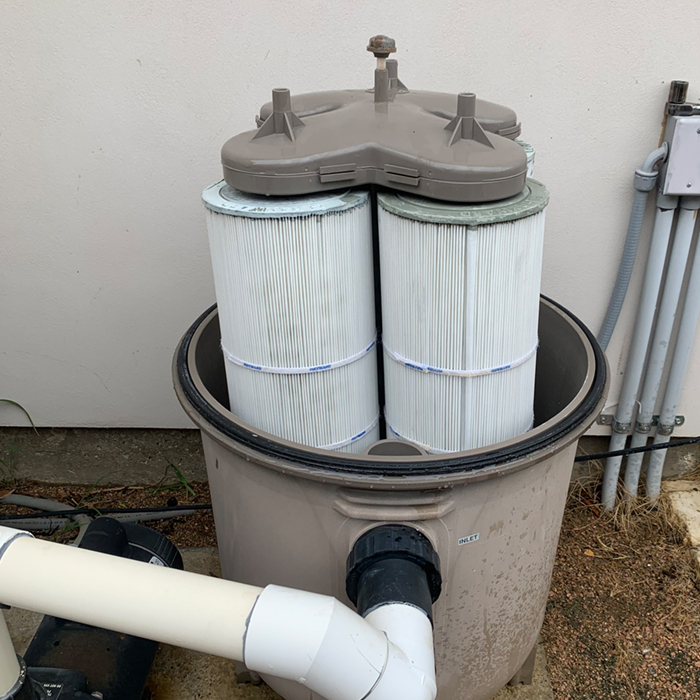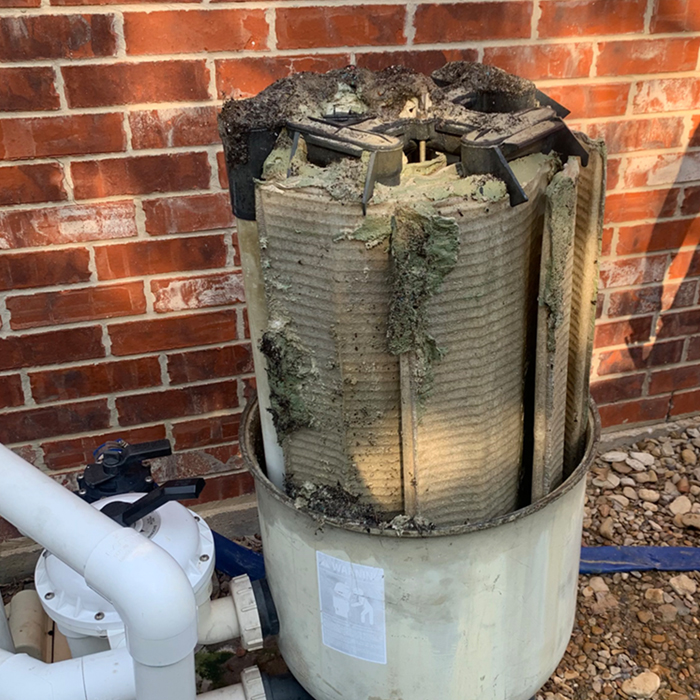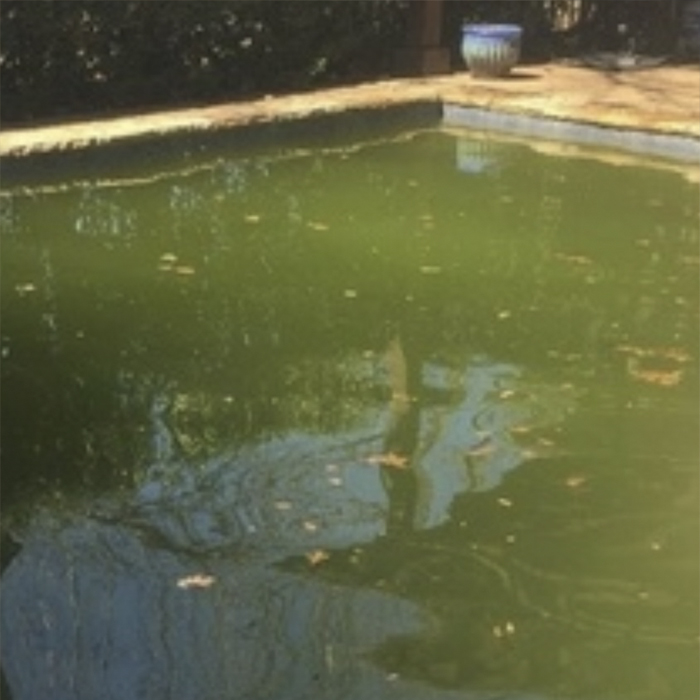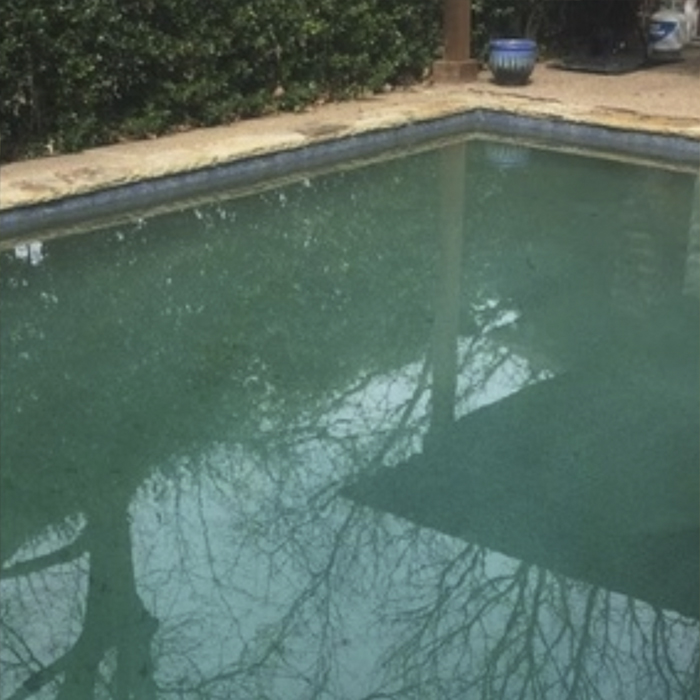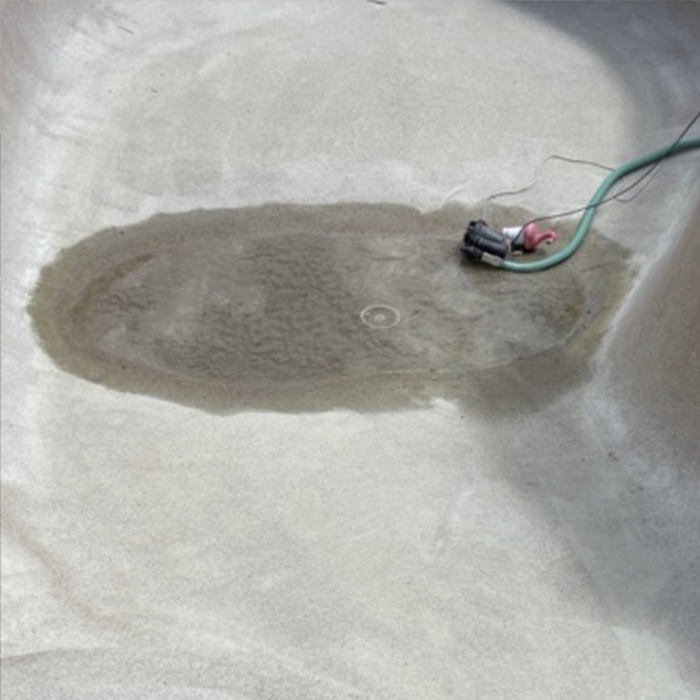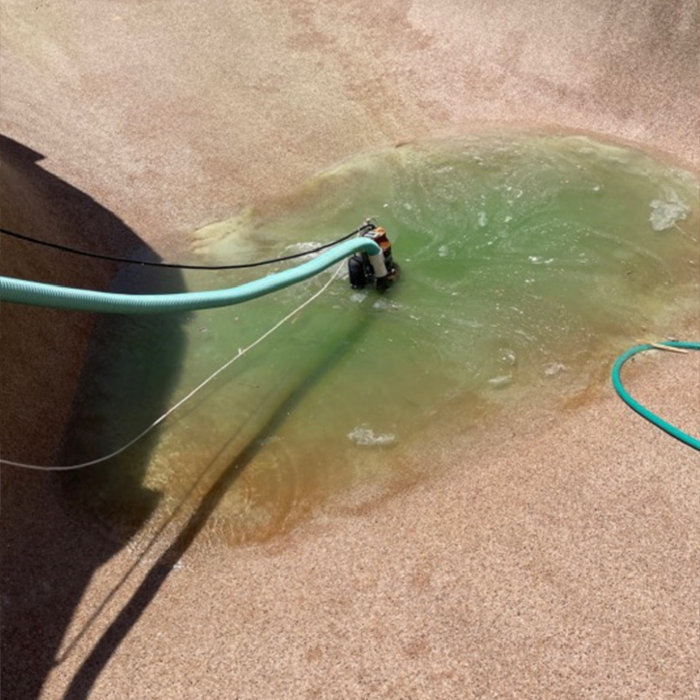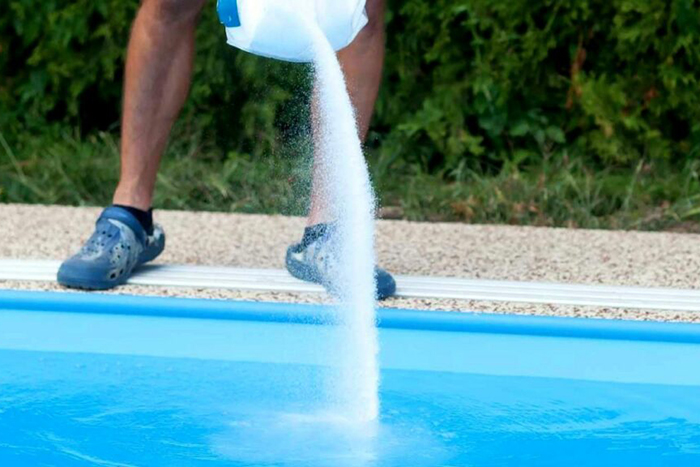Filter Maintenance Program
(FMP)
A clean pool filter is a key factor in keeping your pool sparkling clean. When your filter is clean, it’s easier for your equipment to function, water flows better, and your pool is happier.
We’ll give you a free estimate on a one-time filter cleaning. Or, sign up for FMP — our Filter Maintenance Program — and we’ll include the following at no additional charge**:
Services included with FMP
Besides cleaning your pool filter at your regularly scheduled time, as part of FMP we’ll also check your:
Pool Pump Lids and O-Rings
Pool Pump Baskets
Salt Cell Check***
Filter Gauge
Skimmer Baskets
Skimmer Flaps
Pool Cleaner
Serviceable Check Valves
More FMP Details
*Cartridge pool filters usually need to be cleaned 4 times per year. DE filters typically require cleaning every 6 months. Other factors, such as the size of the pool, excessive leaves, or bad weather, may require additional cleanings. Contact us for more info.
**Parts replaced during FMP will be at additional cost. Tax not included.
***If your Salt Cell requires cleaning, an additional charge will apply.
Pool Cartridge Filters
Pool cartridge filters typically consist of 4 paper cylinders that filter the water as the pump is running. We believe that this type of filter is the easiest to clean without a ton of experience. While the system is off, you can remove the filter drain plug and wait for the filter to drain. We recommend opening the air relief all the way to speed up the draining. When the filter is empty of water, you can remove the main filter band clamp, this allows you to remove the top of the filter.
Continue reading...
Be careful how you set the top down, you don’t want to damage the air relief or gauge assembly. At this point, you remove the 4 cartridges, inspect for damage and start cleaning each filter from top to bottom. Take your time to be sure to remove as much filtered material as possible. Once clean, rinse the base out, lube the filter o-ring and reverse your process until the filter is back together and you are ready to turn the system on. Please be sure to follow the manufacturer instructions on the filter cleaning process and the proper way to tighten the clamp.
At Dragon Pool Services, we believe that a pool cartridge filter is a great choice for a pool with limited or no nature around it. Because you have to take the entire filter apart to clean and there is no backwashing option, older pools where the nature around it has matured may have to be cleaned more often. Pool cartridge filters typically need to be cleaned 3-4 times per year for regular service. If there is a major storm and some of the rain run-off makes it into the pool, extra cleanings may be needed.
DE Filters
DE filters are able to handle loads better than pool cartridge filters. They have a backwash valve in front of the filter, that when used properly allows you to do a “quick clean” on the filter, by running the water backwards thru the filter and out to waste. You MUST add the DE back into the system after a cleaning or backwash. The DE (diatomaceous earth) is a fine powder that filters the pool water. DE filters usually consist of 8 canvas covered grids that get coated with the DE. This combo allows for cleaner water and quicker pool turnarounds.
Continue reading...
As mentioned above, the internal grids in the filter get coated with the DE to filter the water. These grids must be separated, cleaned and inspected for holes, so that the DE does not flow back into the pool. We recommend cleaning DE filters twice a year. The process is basically the same to get to the grids, as it is to get to the cartridges. It is at this point that the pool filter cleaning gets a bit more difficult. The grids are part of an assembly that are attached to a water manifold and must be assembled in a specific order so that the pool filter can be put back together correctly.
We feel that the DE filter, even though it is harder to clean, is the best option for larger pools and pools with mature plants around them. The backwash feature alone can be extremely helpful during the spring and fall.
Storm Cleanup
As you know, Texas weather has its own personality! If your pool has been hit by a popup storm, we can provide a free estimate for the storm cleanup. We can handle leaves and limbs, as well as complete drains if your yard has dumped mud into the pool.
Ask us for a free storm cleanup estimate.
Acid Wash
Depending on the age and condition of your plaster, an acid wash may refresh the look of the surface of the plaster.
What is involved with an acid wash
During an acid wash, we drain the pool, typically clean the filter, apply an acid/water mixture to the surface of the plaster and pressure wash the plaster. This process usually takes a day to complete. After the acid and pressure washing is done, we will turn the water on to fill the pool. Once you let us know the pool is full, we will swing back by to turn the system on and get the pool running again.
Let us know if you are interested in a free estimate to determine if your plaster could benefit from an acid wash!
Salt Cell Cleaning
Chlorine Generator Pool Maintenance
Salt systems for pools generate chlorine by splitting the sodium and chlorine apart from salt. The chlorine produced sanitizes the water in the same way adding chlorine does. The sodium and chlorine will meet back up and turn back into salt.
What is involved with an acid wash
Most pool salt systems need to be between 3000-3600 parts per million in salinity and need to be cleaned regularly in order to operate correctly. We recommend having your salt cell checked, at minimum, at the time of filter cleaning (at least twice a year).
For best performance of your salt system, the cell should be checked every three months. During normal operation, calcium can build up on the fins inside the cell. It is very important to keep the cell clean so that it can operate as intended. Most quality salt systems consist of a salt cell, a control system and a sensor system. Having an issue with any portion of the system can prevent chlorine from being made. Other impacts on chlorine production are low or high salinity, low or high water temperature, no flow (possibly from a dirty filter), or bad or damaged parts of the system.
Frequently Asked Questions
Pool Maintenance
At what rpm/speed should I run my pool pump?
Pump speed can vary based on factors like the size of the pool and how dirty it’s become. However, most in-ground family pools are similar in size. Typically the pump is run at 2000rpms for a couple hours and then turned down to 1000rpm for the remainder of the day.
What regular maintenance should be done on a pool?
Daily, weekly and monthly maintenance routines are recommended for proper pool care. Most tasks can be done weekly, though some prefer to do this daily.
Daily
Check water level
Weekly
Check the chemistry
Add chemicals
Shock the pool (when necessary)
Scrub the tile line to remove scum
Check the filter
Lubricate the ORings
Check filter and pump
Inspect the Pool Cleaner
Check the baskets
Remove leaves and debris using a leaf rake
Monthly
Check calcium and CYA levels
Test salt levels
3-6 Month Maintenance
Disassemble and thoroughly clean the filter, replace cartridge elements.
Seem like a lot? Don’t do it all alone, call Southlake Pools!




